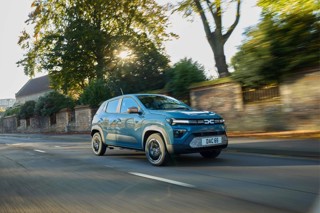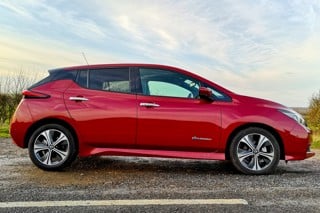How close is the industry to a fully-functioning online buying process? These keys may help speed it along...
Automotive retail has embraced various e-commerce solutions with some groups and manufacturers providing the facility to buy online and others offering the ability to complete the final transaction in the digital space. But is the sector really ready to deliver genuine end-to-end e-commerce to the majority of customers?
1. THE RIGHT MINDSET
GForces describes consumers whose buying behaviours have changed as being forced to navigate an ‘archaic’ dealer-based sales process that attempts to control the customer. Paul Stokes, its head of online retailing, said: “If we can do away with the disconnect that consumers encounter between their online and offline experiences, then we’ll be creating a truly omni-channel selling environment.”
The omni-channel approach sits at the core of GForces’ own e-commerce offering and dealers need to create a pressure-free
environment that is more open, transparent and gives more control to the customer, so engendering trust – resulting in increased sales and the likelihood of customers purchasing genuinely helpful added-value products.
Likewise, iVendi’s chief executive James Tew considers the current purchase process as disconnected, making buying a car ‘arduous’. Complicated by several elements such as vehicle price negotiation, trade-in negotiation and compliance obligations, a seamless e-commerce solution is difficult to deliver. Tew said: “What I call the ‘happy path’, where the price, trade-in and finance enables a true end-to-end digital journey to be undertaken, caters for the minority – around 30% – of customers.”
The iVendi team undertook an analysis of 8,300 transactions in July and found 70% included some form of negotiation, which made it impossible for the sale to be managed entirely in the e-commerce space.
Meanwhile, since it’s never been easier to make an enquiry, salespeople can feel besieged by the sheer volume of leads. While the quality is often variable, consumers still expect a speedy response, according to Jeremy Evans, managing director at Marketing Delivery. Evans said: “If dealers can’t handle leads, they need to outsource enquiry management or find a technology partner able to introduce a level of automation and centralised management of social campaigns and digital interactions.”
2. KEEP IT PAPERLESS
Digital document management solutions, such as iDealFile from MotorDocs and Arena’s mstore, allows the e-commerce experience to continue throughout the sales process. By integrating with dealer management and third-party systems, iDealFile turns unsecured manual paper-based deal files into secure electronic, digitally-signed, visible, traceable and auditable data, even though a deal file can consist of up to 70 different documents. MotorDocs estimates it has achieved productivity gains of more than 150,000 working days across all sites.
Ritchie Kelk, MotorDocs managing director, said: “There are more than 350,000 live deal files on iDealFile, storing nearly 4.4 million documents. Based on average figures, this equates to at least £1.4 million of cash savings from reduced printing, storage and retrieval costs.”
At Arena Group, director of technology Neil Maude said: “E-commerce is on the customer’s terms in relation to touchpoints through the sales cycle, so they may have different people contacting them from your business. This needs to be accounted for within your system and support delivery of a slick customer experience. Your platform needs to make all relevant documentation accessible to your team as well as the customer at the right time. You need to manage document versions robustly and track who’s looking at what, or what changes have been made. A complete digital platform should manage all key documents in digital form to enable this while you are interacting online.”
While Evans acknowledges the importance of going paperless, dealers are still failing to gather customer data. Marketing Delivery research shows incomplete information is held on 29% of franchised dealer customers. Email is the most often-missed detail, despite being customers’ most preferred option for contact – 48% prefer email for aftersales communications, compared with 20% preferring phone contact.
3. EFFICIENT STOCK MANAGEMENT SYSTEM
An e-commerce platform can’t be a ‘one trick pony’ that only focuses on online vehicle sales, according to GForces’ Stokes,
who highlights the NetDirector Auto-e functionality that continually cleanses, matches and enhances the data held on vehicles and feeds stock automatically to major third-party portals.
After iVendi launched its stock solution to identify vehicle coding errors which can see the wrong spec advertised falling foul of advertising standards regulations and can skew PCP finance calculations which has FCA compliance implications, its data analysis found at least 8% of vehicles were uploaded with inaccurate information.
However, iVendi has only identified vehicles where different datasets create a discrepancy alert, whereas some cars could have datasets that match but may still contain inaccuracies. Since Auto Trader markets around 450,000 vehicles at any one time, 8% amounts to some 36,000 vehicles.
Meanwhile, around 5% of vehicles have no industry code assigned, preventing online transactions from happening in the first place. “We are a long way away from resolving the problem,” said Tew: “From an online retail perspective, it is imperative that data integrity is maintained – and that is not
the case.”
4. WHAT YOUR ONLINE PLATFORM NEEDS TO DO
GForces’ platform, NetDirector Auto-e, has been designed to function as a website with e-commerce infrastructure enabling dealers to move forward when ready. Dealers can just take deposits and full cash payments online, but can progress to full end-to-end e-commerce, including online finance applications and instant approvals.
Stokes said: “Your e-commerce platform also needs to provide a buying journey that customers recognise. That means it needs to be delivered directly from your website, without redirecting the customer to a third-party finance provider or otherwise. Just like on Amazon or eBay, they should be
able to browse and buy seamlessly directly from you.”
Tew added: “It’s not a linear journey, you have to go back and forth. Consumers have recognised that negotiation is part and parcel of buying a vehicle. Meanwhile, dealers want to price up with add-ons. Of the 8,300 transactions we analysed in July, 43% of vehicles were sold at a higher price. Negotiating the trade-in and including add-ons has an impact on the whole deal.”
MotorDocs advises dealers to look for use of Microsoft’s ISO 27001-accredited Azure platform, A+ Pen Test ratings and secure login processes. Platforms should also integrate with the DMS, incorporate multiple user levels and have an auditable authorisation and approval process.
5. HAND OVER WELL
Consumers now expect to be able to choose between picking their vehicle up at the dealership or having it delivered to them, without attempts to upsell, according to GForces. Its system features a customer account portal to continue engagement throughout the buying journey, allowing customers to interact with the business on their terms.
Arena Group’s Maude maintains the paperless journey should be continuous, including providing digital documentation in advance of the delivery to enhance the customer experience. He said: “Having committed to a major purchase, it keeps the customer informed, demonstrates progress and activity while they’re waiting, and avoids worry.”
Much less attention is paid to the digital handover, according to Evans, even though it is arguably more important. Customers should be ‘warmed up’ ahead of their collection visit, easing the path for sales of service packages, additional insurance solutions, merchandising and accessories and should continue after the customer has left the showroom.
For Tew, an entire online car-buying journey is some way off: “It’s the Ladybird book level of e-commerce that we have today and it needs to be more like War and Peace. However, the e-commerce solutions we have are a stepping stone which will lead us to the evolution of new iterations, and we are about to go to the next iteration.”



















Login to comment
Comments
No comments have been made yet.